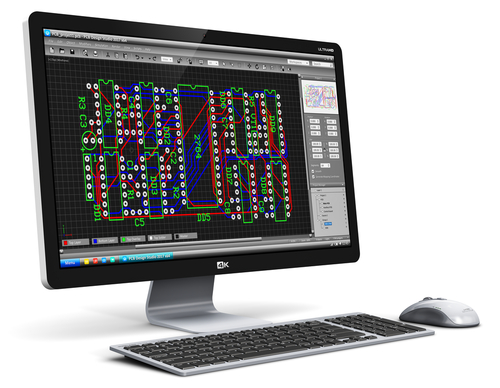The creation of a powered device starts with the design of a printed circuit board (PCB). Unlike designers in the past, the technology of today is made possible with PCB design software. While there are free options available, they cannot compare to the level of sophistication offered by popular options, such as OrCAD or Allegro.
OrCAD vs Allegro
It’s not always that a designer just decides to try a software then stick with it through life, or at least until it ceases to exist. Choosing the right product often includes a bit of experimentation to see which one is the best fit.
Two of the most popular PCB design software options available are OrCAD and Allegro and this guide will give insight on which may suit you best.
Features
OrCAD has standout features like PSpice add-ons, which allow full circuit simulation. Although it might have a steep learning curve, the program does make performing certain functions a bit easier.
Allegro, on the other hand, is seen as one of the best PCB design software suites on the professional level. The standout feature of this program is its PCB designer.
Ease of Use
Unless this is the software used by an employer, using any of the software requires some level of learning. It’s best to spend a few days – maybe even weeks or months – getting comfortable with the program, especially if you want to do freelance work.
To be fair, OrCAD and Allegro are both geared towards professional use so it’s quite understandable for them to be rather complex.
Platform
Sometimes, a platform can be so great and offer a range of great features but it will disappoint when it comes to supported operating systems. Sadly, this is the case with OrCAD and Allegro. Both programs are only available for the Windows platform.
That can be quite limiting given that not all designers use Windows. Then again, there are other options such as Eagle, KiCAD, and Circuit Maker that work fine with other platforms.
Cost
Both Allegro and OrCAD aren’t within the affordable spectrum. Companies can surely afford the price tag of each, but that puts freelance designers in a pickle. The type of software one uses makes a whole lot of difference, particularly in what it is able to do.
Since both of these applications cost quite a lot of money, freelancers often find themselves being forced to make the investment. Although it is an investment that will pay for itself over time.
Other PCB Design Software Options
Although Allegro and OrCAD are often very popular, they are by no means the only options around. DipTrace is pretty good and it is aimed at hobbyists and the learning curve is relatively easy. It has decent support and tutorials and the user interface isn’t difficult to use.
There are lots of PCB design software available, both free and paid. While a lot more can be done with high-priced applications, everything must boil down to how well a software fits one’s needs. Contact CA Design today for Allegro or OrCAD layout services today!




